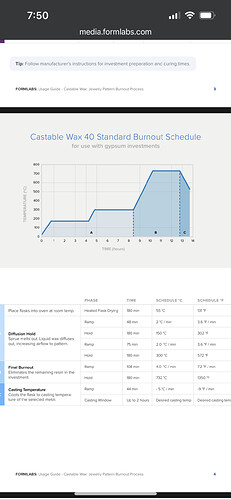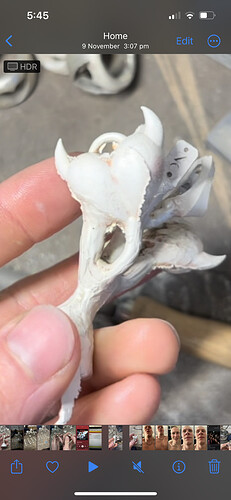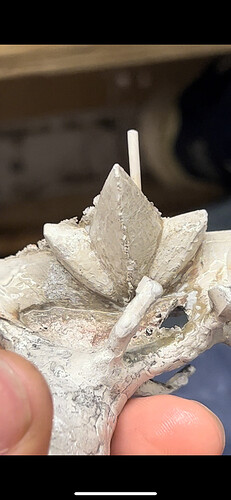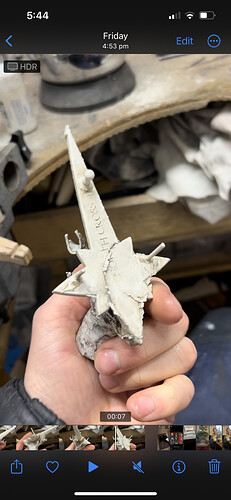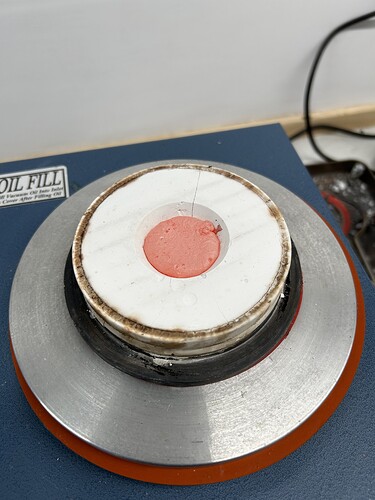Hi Luke,
I had many of the same problems as you’re describing. I use Zero from Power Resins and R&R Plasticast and it has worked out really really well.
I followed the mixing directions that R&R has posted for Plasticast, including the ratio of deionized water to investment, mixing steps and times. The deionized water and temp is essential or the investment sets up way too past to pour. I also created my own burnout schedule based on Power Resins, Legor, and what R&R suggests for Plasticast.
Please bear in mind that castable resin is much more temperamental than wax. So success is in the details. See my notes below on two burn out schedules:
- Best instructions, combo from Legor and Power Resins:
Let Plasticast cure undisturbed for exactly 3hrs after pouring, then place in a 300 degree F preheated kiln, sprue down. Be sure there is at least 1” space all around the flask, including from the kiln floor.
Hold 300 for 3hrs
Remove tray of melted wax, and flip flask so sprue is facing up. This allows fumes to escape.
200/hr to 700, hold 2hrs
789/hr to 1292, hold 30 mins
270/hr to 1427, hold 3hrs
FULL/hr to 1076, hold min 2hrs
Total Time Takes around 14-15hrs. End temp depends on metal to be cast, size and detail of the model.
Then cast
Sample of past casting:
-poured investment at 5:45pm
-burnout began at 9:05pm
-flip flask and pulled tray on at 11pm.
-end temp at 1005 F. Cast reg sterling silver at 1775 F at 12noon. (min 1762-1940 max)
(Would be 1800 if I used a argentium)
- Below are notes on another casting that went well:
2/5/23 Used exact Power Resins burnout schedule today:
Let investment set up for 3 hrs exactly, then place in preheated kiln.
115C hold 5 hrs, 239,rate full
700C reach n 1:20, hold :30, 1292, rate full
750C reach n :30, hold 3:00, 1382, rate 180
600C reach n 1:00, hold 1:00+, 1112, rate full
10:05 AM started burn out
Arg 935
<.5mm, 1184,1904. Koki Beads
1.2mm,1070,1800. Ring
8pm 1184 w/10 hrs, hold time yet to go
Results:
-The beads casted perfectly! The prong/pegs fully casted
The notes will take a bit of deciphering, but I don’t think it will be difficult.
Best,
Sam
![]()
![]()
